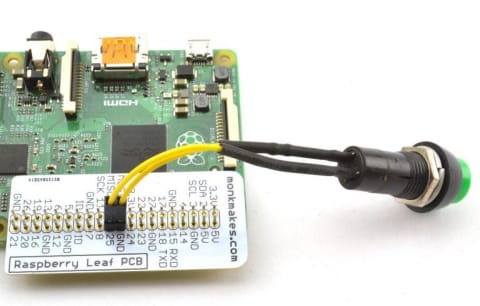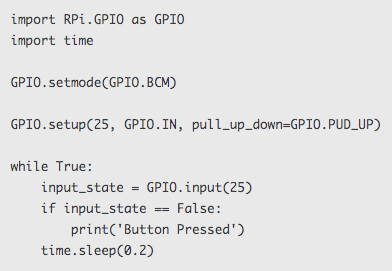Squid Button non-latching Individual
Squid Button non-latching Individual is backordered and will ship as soon as it is back in stock.
Couldn't load pickup availability
DESCRIPTION
The Squid Button makes it super easy to attach momentary action push switch with trailing leads that end in female header sockets that will fit over GPIO pins on a Raspberry Pi, Node MCU or Particle Photon.
To reduce the chance of accidental short-circuits during use, each Button has a built-in 470Ω resistor that does not affect the switching action when connected to a GPIO input but does mean that if the switch is accidentally connected across power connections your Raspberry Pi will not come to any harm.
Please Note:
- Switch and lead colours may vary
RESOURCES
1) Start by putting a Raspberry Leaf GPIO template supplied over the GPIO connector like this:

2) Attach the button as shown below, with one lead connected to GND and the other to GPIO25. If you don’t have a Leaf, count along the pins to find the right position.

3) Now you can try out the Button using a little Python program. So, open an LX Terminal window and then run the command below (no need to type the $ sign):

When the editor has opened, paste the following code into it:

Save the file by pressing CTRL-x and then Y and ENTER to confirm.
You can now run the program using the command:
$ python input.py
Now, every time you press the button, you will see the message “Button Pressed”.



